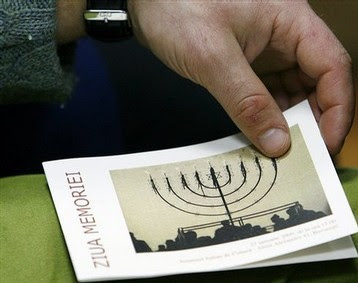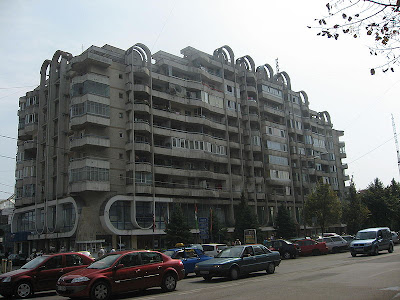Alina's Facebook Account
Alina's Myspace Blog
Alina's Myspace Music Profile
Their Rom language is close to the older forms of Indian languages.
The three tribes of Rom, Sinti, and Kale probably left India after a succession of campaigns in Sind through the C11, initially spending time in Armenia and Persia, then moving into the Byzantine Empire after the Seljuk Turk attacks on Armenia.
Within the Byzantine Empire they dispersed into the Balkans reaching Wallachia (1385) and Moldavia (1370) ahead of this area falling to the Ottoman Turks. Other groups also moved through India to Gujarat and south of Delhi.
Gypsy populations can still be found along all these migration routes.
When entering west Europe they initially had letters of protection from the King of Hungary. This privileged situation did not last long as amazement at their way of life commonly led to hostilities. The Gypsy way of life still leads to hostilities from the people of their host nations.
Europeans regard "private property" as sacrosanct, whereas gypsies do not have a word for "possess", which gives rise to two incompatible ways of life and a continual problem of gypsies being regarded as "thieves" from the European's view.
In each host nation gypsies appear to take on the religion, names and language of their hosts, but within the Rom they maintain their Rom language, names, music, customs and Indian looks.
This tight community has meant that after some six hundred years there is still a large population of gypsies not integrated or assimilated with Romanians. From the time of their arrival in Romania Gypsies were the slaves of the landowners, only to be emancipated in 1851.
While in Romania some of the Gypsies took to speaking a version of Romanian called Bayesh which can be heard in some of the songs of Gypsy groups recorded in Hungary.
Nowadays about 40% of the Gypsies still speak Romany and many can still be seen travelling in lines of carts along the roads of Romania. The majority live in the towns and villages, some fully integrated into villages, some in large ornate houses standing out from the Romanians, but others in small buildings on scraps of lands on the villages edges.
The Rom tribes distinguish themselves by the names of their trades:
* Lăutari = musicians and dancers
* Căldărari (Kalderash) = Tin and coppersmiths
* Argintari = Jewellers
* Fierari = Blacksmiths
* Zlateri = gold panners
* Ghurara = sieve makers
* Lovar = horse dealers

Some Romanian orphans are treated worse than you would treat a dog. These are human beings. Forget about all this shit about why their parents had these children for now. Look at this child, will discussion like this help him? No it wont, in fact no one is helping him. Our government is full of corrupt assholes and the sooner the world sees all this the better.
I could take you to several orphanages in and around Bucuresti that 'don't exist' and show you cruelty like you would never imagine. They wont let you in.....in fact the police would probably arrest you if you went near it. The plans to get into the EU and the future requirements to get cash off the EU depend on all this being hidden away but I'll be a thorn in their side until these children are helped. It is a building with 200+ children inside and NOT ONE OF THEM CRIES !! Why not you may ask yourself. Because they have given up, yes they have given up. When they cry nobody comes, so why fucking bother.
I haven't given up though. Maybe it is too late for this generation but the next might be saved if we ALL give the Romanian government enough pressure.
MDRI investigators found emaciated children, starving and near death, at the adult psychiatric facility in Braila.
Several teenagers weighed less than 30 lbs.
Mental Disability Rights International (MDRI), has found children with disabilities hidden and wasting away, near death, in Romania's adult psychiatric facilities.
A report released by MDRI, Hidden Suffering: Romania's Segregation and Abuse of Infants and Children with Disabilities, describes teenagers weighing no more than 27 pounds.
Some children are tied down with bedsheets, their arms and legs twisted and left to atrophy.
Despite Romanian government claims that it has ended the placement of babies in institutions, MDRI found infants languishing in a medical facility so poorly staffed that the children never leave their cribs.
Many of these children have no identity papers. Officially, they do not exist.
Romanian officials admitted to MDRI that they had no idea how many children with disabilities are in adult facilities.
"I call on the government of Romania and the EU to put a stop to these abuses PLEASE, these are Romania's most vulnerable citizens. The inhumane and degrading treatment that they are forced to endure is intolerable and violates international human rights law."Somebody somewhere might read this and help, but probably not !
It is the 7th largest Romanian city, after Bucharest, Cluj-Napoca, Timişoara, Iaşi, Craiova and Galaţi. People from Braşov are known, in English, as Braşovean.
Braşov is located in the central part of the country, about 166 km from Bucharest. It is surrounded by the Southern Carpathians, and is part of the Transylvania region.
The city is notable for hosting the Golden Stag (Cerbul de Aur) international music festival.
The city was first atested in the 13th century under the name Corona. The current Romanian and Hungarian names are derived from the Pecheneg word, barasu, meaning "fortress". On Tâmpa Mountain, located on the southern side of the city, there was a citadel called Brassovia, which gave both the Romanian and the Hungarian name of the city.
The first attested mention of Braşov is Terra Saxonum de Barasu ("Saxon Land of Baras"), in a 1252 document. The German name Kronstadt means "Crown City", and is reflected in the city's coat of arms, as well as in its Medieval Latin name, Corona. The three names of the city (Braşov/Brassó, Kronstadt, and Corona) were used simultaneously in the Middle Ages.
From 1950 to 1960, during part of the Communist period in Romania, the city was called Oraşul Stalin (Stalin City), after the Soviet leader Joseph Stalin.
It is made up of three main tunnels (picture 2) and inside there is a playground for children (picture 1) - then, be prepared to see the church that has been cut out from inside the mine (picture 3), it is a miraculous achievement to build it and a sight you will never see again as long as you live.
Every time I go there it brings tears of joy to my eyes. Though our country doesn't have much money compared to many others, just look at what we can do with the things God gave us, it makes me so proud to see these things and it is why I love Romania so much.
Catrinel Menghia (born October 1, 1985) is a Romanian model.
She was discovered at the age of 16 on the street by a local agent who took her to Bucharest to meet Liviu Ionescu of the MRA Agency. Six months later, her parents allowed Menghia to move to Bucharest and start her modeling career.
She participated in the Ford Supermodel of the World Romania contest in November 2001, where she won the second runner-up prize.
Menghia now lives in Milan. She has done campaigns for major fashion houses and is the face of Giorgio Armani worldwide. She was also one of the new faces in the 2006 South African Sports Illustrated Swimsuit Edition and has appeared in FHM and Maxim.
She has been the face of the French lingerie brand Lise Charmel since 2005.



Above is part of the Romanian Navy. Three frigates named"Maresati", "Regele Ferdinand" (King Ferdinand) and "Regina Maria" (Queen Mary). Yes we do have a Navy to those who asked me, cheeky f*ckers.
Forţele Navale Române is the navy branch of the Romanian Armed Forces; it operates in the Black Sea. The Romanian Navy includes three frigates: all named above. Mărăşeşti used to be the flagship of the Romanian Navy since 1976 until 2004 when Regele Ferdinand (formerly HMS Coventry) became the new flagship. The navy also contains 4 large corvettes as its main force, along with many auxillary ships and fluvial patrol boats.

Romania's President Traian Basescu (Left) visits
Siluan Manuila, the bishop of Saint Nicholas Cath-
edral, in Gyula, about 240 km (150 miles) east of
Budapest, February 3, 2009. Basescu is on a two
-day official visit to Hungary.
The first recorded reference to Gyula was in a
document dated 1313.
To the east of the town centre stands the old fort-
ress (13th century), now a cultural centre and a
tourist attraction. Nearby, there are thermal spas
known for their therapeutic effects.
In Gyula one may admire "Nicolae Bălcescu"
High School designed by Szabó Jen. The archi-
tecture resembles that of Transylvanian wooden
churches. Not very far is the Romanian Orthodox
Cathedral, erected in 1867.
Gyula is home to Hungary's second oldest cake
shop, and has a town centre comprising numerous
small pedestrianised squares, many of which have
large water fountains.

People walk through the steam from an
underground heating vent on a cold after-
noon in Bucharest, Saturday, Jan. 10, 2009.
Romania experienced a wave of cold weather
over the past week with temperatures as low
as minus 31 degrees Centigrade, -24 degrees
Fahrenheit, in some areas and 43 people
reported dead due to cold related causes
according to Heath Ministry officials.

A Sudanese refugee child looks out from an airport
bus after landing at Timisoara's airport, 500 km
west of Bucharest January 27, 2009. A group of
42 Sudanese refugees have left a makeshift camp
in the desert in Iraq for Romania as part of a res-
ettlement programme, the UN refugee agency
reported.
Romania is not a wealthy country but we welcome
these people and we share what we do have
with them.

A man that reads Memory Day holds a
booklet during an event to mark the
International Holocaust Remembrance Day
in Bucharest, Romania, Tuesday Jan. 27, 2009.
About 800,000 Jews lived in Romania before
World War II, half of them died during the war or
were sent to concentration camps.
Only about 6,000 Jews live in Romania now
according to official statistics.
Pelişor Castle (Romanian: Castelul Pelişor) is a castle in Sinaia, Romania, part of the same complex as the larger castle of Peles. It was built in 1899–1903 by order of King Carol I, as the residence for his nephew and heir, the future King Ferdinand (son of Carol's brother Leopold von Hohenzollern) and Ferdinand's consortQueen Marie.
In 2006, it was decided that the palace complex, including Pelisor, long a museum and tourist site, is the legal property of the heirs of the Romanian royal family. They will take legal possession of it and sell it back to the Romanian state, so that it will remain in its current status. The main castle of Peles has already so sold, but negotiations about other villas and chateaus are ongoing. King Michael I of Romania appears decisive that of the complex, Pelisor castle will remain as place for his heirs, the Royal Family.
Pelişor was designed by the Czech architect Karel Liman in the Art Nouveau style; the furniture and the interior decorations were designed mostly by the Viennese Bernhard Ludwig. There are several chambers, working cabinets, a chapel, and "the golden room". Queen Marie herself, an accomplished artist, made many of the artistic decisions about the design of the palace, and participated in its decoration, including as a painter. Queen Marie considered Art Nouveau a weapon against sterile historicism, creating a personal style combining Art-Nouveau elements with Byzantine and Celtic elements.
The hall of honor is very simple with the walls covered with oak-timber and a glass ceiling.
Gypsy Dance Theatre's motto is
"Ancient rhythms and dance for the 21st Century."
Composed of a group of highly spirited, and multi-talented,
professional entertainers, Gypsy Dance Theatre invites
its audiences to tap into the muse of the quintessential
Gypsy spirit.
Incorporating music, song, dance, and humorous theatre
pieces, their shows include influences from many of the
world's diverse ethnic cultures. Audiences will be charmed
and entertained with the fire, beauty and grace of a
Russian-born Gypsy princess, the passion of a sensuous oriental
belly dancer, the manly acrobatics of a sword-wielding
Cossack, and musical styles ranging from Spain
and Eastern Europe to India and Asia.
Creativity and improvisation insure that no two shows are alike.
Beneath it all runs a current of powerful rhythms and music
performed on everything from Indian bamboo flutes,
Turkish ney, clarinet, accordion, mando-cello, and vocal
harmonies, to tribal drums from Africa and the Orient.
By design, creativity and improvisation insure that no
two Gypsy Dance Theatre shows are alike.
Experience Gypsy Dance Theatre and
let your own gypsy spirit fly free.
Populations in Scandinavia are low - with perhaps 2000 bears
in Sweden, for example - but steady and slowly increasing.
Larger populations can be found in Croatia, Slovakia, Slovenia,
Bulgaria and Romania, but these are isolated populations. Most of the
brown bears in Europe can be found in Russia, however, it was near
extinction due to extensive hunting prior the Russian revolution of 1917.
In my home town, Zizin and in Brasov, Craiova, Tarlungeni and
other places in Transylvania, they can be seen wandering down the
main streets looking for food.






















